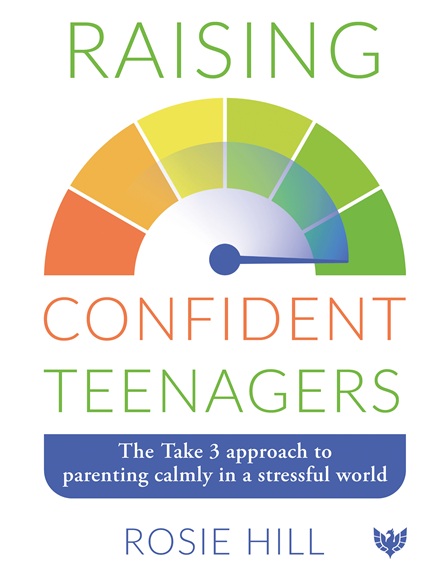Raising Confident Teenagers: The Take 3 Approach to Parenting Calmly in a Stressful World

Book Details
- Publisher : Karnac Books
- Published : 2025
- Cover : Paperback
- Pages : 262
- Category :
Forthcoming - Category 2 :
Child and Adolescent Studies - Catalogue No : 98068
- ISBN 13 : 9781800133075
- ISBN 10 : 1800133073
Table of Contents
Acknowledgements
About the author
Introduction
How to use the book
Notes on terminology
Afterthought
1. Why Take 3?
If you always do what you’ve always done, you’ll always get what you’ve always got
The Take 3 approach
All parents are doing their best
Take 3: What’s in the name?
A word of warning ...
Ground rules
Hopes and fears
Self-care
Practice tasks
Key learning points
2. What is adolescence?
If we do for other people what they can do for themselves, we can lower their self-esteem
Teenage stereotypes
Our own adolescence
The ‘tasks’ of adolescence
Emotional literacy
Practice tasks
Key learning points
3. Encouraging young people
Behaviour that’s noticed increases; what we pay attention to, we get more of
Encouragement and praise
Encouragement: What does work?
Rewarding effectively
Making connections
Visual aids
Practice tasks
Key learning points
4. The power of listening
A problem shared is a problem halved, so zip those lips
What difference can listening make?
Improving our basic listening skills
Listening challenges for parents
Active listening: When people have strong feelings
Practice tasks
Key learning points
5. Misbehaviour and listening
We’ve got two eyes and two ears—these are much better tools for parents than one mouth
Misbehaviour: Why do young people misbehave?
Linking misbehaviour and listening
Using active listening with young people
A visual reminder of active listening
Practice tasks
Key learning points
6. The four styles of parenting
Anything we make conscious, we can transform
The four styles of parenting: An introduction
The four styles of parenting: How did your parents or carers tend to behave?
Effects on young people of the four styles of parenting
Change Is difficult (bad news!) but possible (good news!)
Body language and modelling behaviour
Practice tasks
Key learning points
7. Taking stock, ‘I’ statements and boundaries
I love you enough to say NO when I know you’ll hate me for it
Taking stock
‘I’ statements: A powerful way to communicate
‘I’ statements: A summary
4Fs boundaries: Firm, fair, friendly fences
Where to draw the line: First stage
Where to draw the line: Second stage
Are you prepared for a reaction?
The broken record technique
Boundaries: A summary and some further thoughts
Practice tasks
Key learning points
8. Negotiating boundaries and consequences
When young people are given some say in the outcome, they’re more likely to stick to agreements
Typical ways parents try to change adolescent behaviour
Six stages of negotiating boundaries and resolving conflicts
Using consequences
Why punishments don’t work
Family agreements
Practice tasks
Key learning points
9. The drama triangle, sibling rivalry, adult relationships and family meetings
If we ‘rescue’ our young people, they never learn to stand on their own two feet
The drama triangle
Sibling rivalry
Adult relationships
Family meetings
Practice tasks
Key learning points
10. Teens and screens—media challenges and digital optimism
Don’t despair! Use your Take 3 skills to support yourself and your adolescent
Introduction
Digital skills and resilience
More benefits of the internet
Reflecting on our own and our children’s experiences of media use
Screens and sleep issues
Risks
Setting limits
Practice tasks
Key learning points
Notes

